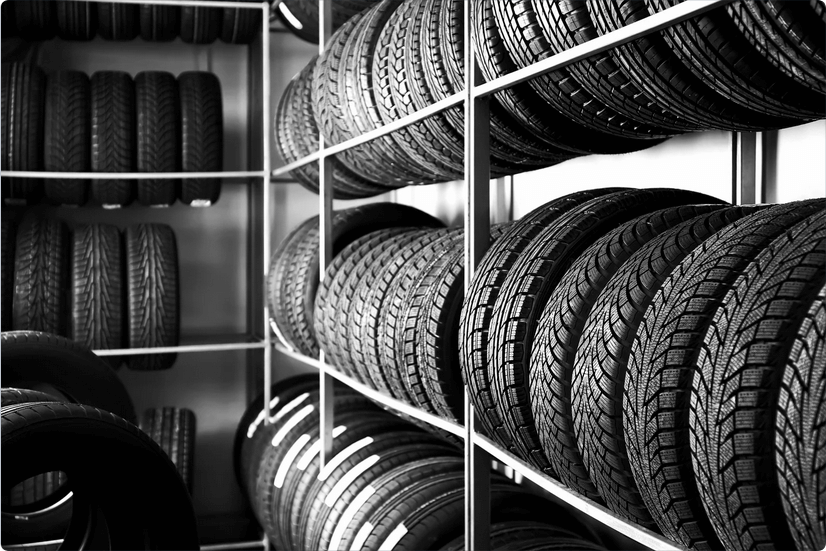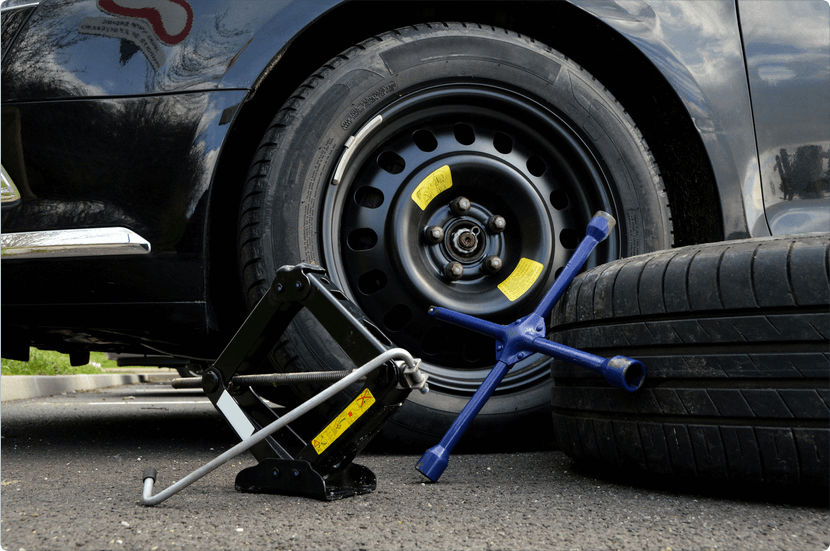If you’re in the market for a new vehicle, you’ll likely want to check a prospective vehicle’s safety features. Unlike in the past, vehicles often have tons of safety features included in them, which can make it harder to keep track of what they do and if they’re worth having. To further complicate things, vehicle manufacturers frequently offer the same or similar safety systems with unique trademarked names.
As you look for a new vehicle or evaluate your current vehicle’s safety, review our guide to the main types of modern car safety features and how to know whether a vehicle is safe.
Breaking Down the Five Main Types of Modern Vehicle Safety Features
Modern vehicle safety features help protect drivers from a wide variety of potential risks. For example, many modern vehicles feature forward collision prevention, terrain safety, driver monitoring, parking, and lane assistance features to protect drivers, passengers, and pedestrians from accidents.
Below, you can find a breakdown of the five main types of safety features in cars and what the most commonly included vehicle safety features do:
1. Forward Collision Prevention
Collision Prevention and Mitigation Safety Features
- Anti-Lock Braking System (ABS): Prevents the wheels from locking up during braking, helping you maintain steering control by restoring traction to your tires.
- Automatic Emergency Braking (AEB): Detects slow or stopped traffic ahead and automatically applies the brakes if you fail to respond, helping to avoid or mitigate collisions.
- Brake Assist: Senses emergency braking situations and provides additional braking force to help you stop more quickly.
- Forward Collision Warning: Scans the road ahead and warns you if you’re about to collide with a slower-moving or stopped vehicle, giving you time to swerve or stop before you crash into the other car.
- Left Turn Crash Avoidance: Monitors oncoming traffic when you’re turning left at low speeds (such as at a traffic light) and automatically brakes if it detects you’re turning into the path of another vehicle.
- Traction Control: Adjusts engine power or applies brakes to individual wheels to prevent wheel slippage, helping your vehicle maintain traction on slippery surfaces.
Anti-Speeding Safety Features
- Curve Speed Warning: Alerts drivers when approaching a curve at a speed that may be too high for safe navigation.
- High-Speed Alert: Notifies drivers when they exceed a predetermined speed threshold, promoting adherence to speed limits.
Adaptive Safety Features
- Adaptive Cruise Control: Maintains a set speed and automatically adjusts it to keep a safe distance from the vehicle ahead.
- Adaptive Headlights: Adjusts the direction and range of the headlights based on steering input and vehicle speed to enhance nighttime visibility.
2. Anti-Rollover, Braking, Tire Pressure, and Terrain Safety Features
Braking and Anti-Rollover Safety Features
The ABS, AEB, and traction control systems mentioned above not only help prevent collisions but also play a critical role in enhancing braking performance and preventing vehicle rollovers. Additionally, brake assist and electronic stability control contribute to maintaining control during emergency maneuvers.
Terrain Safety Features
- Temperature Warning: Alerts drivers when the outside temperature is at or below freezing, indicating potentially icy road conditions.
- Hill Descent Assist: Maintains a controlled speed when driving downhill without requiring the driver to apply the brakes, enhancing safety on steep declines.
- Hill Start Assist: Prevents the vehicle from rolling backward when starting on an incline by temporarily holding the brakes as the driver transitions from the brake to the accelerator.
3. Driver State Monitoring and Communication Safety Features
Detection Safety Features
- Obstacle Detection: Senses slow-moving or stationary objects at low speeds and can warn the driver or apply brakes to avoid collisions.
- Pedestrian Detection: Recognizes pedestrians in your vehicle’s path and can warn you or apply automatic braking to prevent or mitigate a collision.
- Bicycle detection: Identifies cyclists in or near your vehicle’s path and can alert you or apply automatic braking to prevent a collision.
Driver and Tire Pressure Monitoring Safety Features
- Tire Pressure Monitoring System: Monitors tire pressure and alerts the driver when it falls below the recommended level, helping to prevent blowouts and improve fuel efficiency.
- Drowsiness Alert: Monitors driver behavior for signs of fatigue, such as steering patterns, and provides alerts to encourage rest breaks.
4. Parking and Backing Assistance Safety Features
Backing Assistance
- Back-Up Camera: Displays the area directly behind the vehicle when in reverse, aiding in parking and preventing back-over accidents.
- Back-Up Warning: Alerts drivers to obstacles behind the vehicle while reversing, often through audible warnings or visual indicators.
- Rear Cross Traffic Alert: Warns drivers of approaching traffic from the sides when backing out of parking spaces, reducing the risk of collisions.
Parking Assistance
- Automatic Parallel Parking: Assists drivers in parallel parking by controlling steering while the driver manages acceleration and braking.
- Parking Sensors: Detects objects around the vehicle during parking maneuvers and provides warnings to prevent collisions.
5. Lane and Side Assistance Safety Features
Lane Assistance Safety Features
- Lane Departure Warning: Alerts drivers when the vehicle unintentionally drifts out of its lane without signaling, promoting safer lane-keeping.
- Lane Keeping Assist: Provides gentle steering inputs to help keep the vehicle within its lane if unintentional drifting is detected.
Side Assistance Safety Features
- Blind Spot Warning: Notifies drivers of vehicles in their blind spots, often through visual indicators on side mirrors, to assist with safe lane changes.
- Sideview Camera: Provides live video feed of the vehicle’s blind spots or sides when you turn on your turn signal or activate it manually, enhancing visibility during lane changes or turns.
Do Modern Safety Features Actually Improve Vehicle Safety?
While some drivers might find modern safety features to be overkill, they’ve actually been proven to improve driver safety in the United States. For instance, the National Highway Traffic Safety Administration (NHTSA) found that the average vehicle in 2012 had an estimated 56% lower fatality risk for occupants compared to an average vehicle in the late 1950s.
NHTSA also estimates that new or improved safety features saved approximately 600,000 lives between 1960 and 2012. While NHTSA doesn’t have current estimates for the number of lives safety features developed after 2012 have saved, it’s quite likely that these new safety features in cars have saved many more lives.
What Modern Safety Features Do Vehicles Actually Need?
Though all of the previously covered modern vehicle safety features can keep you safer, NHTSA recommends drivers pick vehicles with the following driver assistance technologies:
- Forward collision warning
- Lane departure warning
- Crash imminent braking (a type of AEB)
- Dynamic brake support (another type of AEB)
In addition to checking for these car safety features, you can review NHTSA’s rating of a vehicle you’re interested in purchasing through their 5-Star Safety Ratings program. This program rates vehicles on a five-star scale, with a one-star rating being the lowest and a five-star rating the highest. If a vehicle has more stars, it will be safer than a vehicle with a lower star rating. You can use NHTSA’s rating page to search for a vehicle and check how safe it is.
Choose Chapel Hill Tire for Vehicle Safety Inspections in the NC Triangle
Alongside purchasing a vehicle with a five-star rating and modern safety features, you should still have your vehicle inspected regularly to ensure it’s safe to drive. If you need a vehicle safety inspection in Raleigh, Chapel Hill, Durham, or the surrounding areas, Chapel Hill Tire can help. Our inspections ensure your vehicle is working at its best and your safety features are performing as they should. Whether you need an NC state inspection or just want to check that all your safety features are working, we’ll be happy to help!
Check out our vehicle inspection services today. If you’re ready to receive an inspection or need any of our other repair services, please make an appointment at one of our convenient locations in the Triangle area. You’ll also want to check out our coupons to see how much you can save on our services!


